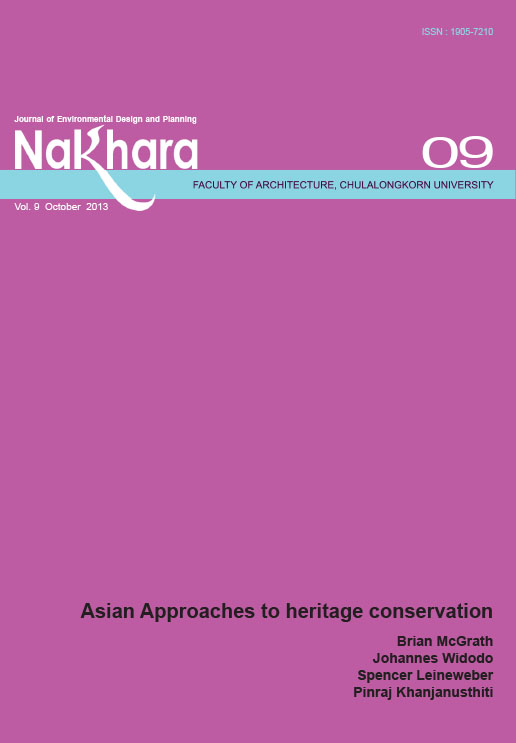Conservation of Spatial Centrality: a Case Study of Markets in Ayutthaya Historic Town
Main Article Content
Abstract
This article’s objective is to examine the transportation networks and spatial centrality of the markets
in the historic town of Phra Nakorn, Sri Ayutthaya. The ultimate aim is to provide information which
can serve as the basis for establishing guidelines for the preservation of the historic town’s spatial centrality in an Asian context. With rivers surrounding it, Ayutthaya town is located on a small island with historical buildings covering over 70% of the town’s area. The town is considered an enclave of relict morphological units. The central trading areas cannot expand or grow normally. In addition, the connectivity of transportation networks in various areas is obstructed in different ways.
This research was based on the theoretical concept of urban morphology. Space syntax was used as an analytical tool to prove that the visibility potential and accessibility of transportation routes results from a connectivity of networks in the area. This was analyzed along with trade behaviors of those in the town’s area. Study results show that the effective connectivity of transportation networks defi nitely affects the popularity of an area as well as the dispersal of various activities. Areas with higher visibility and accessibility than other areas have become trade centers in the spatial centrality process. Huaro Market is a case in point. However, even without favorable visibility and accessibility, trade attractors and other factors can also induce people to come to the area and result in the establishment of a market such as in the case of Chaophrom Market. Nevertheless, trade activity may occur only sporadically or during certain periods.
An approach for the conservation of an historic town’s spatial centrality thus has as an important condition; the thorough and systematic connectivity of transportation networks. The historical area must be integrated and unifi ed with the town’s transportation networks to optimize both the visibility and accessibility of the town’s spatial centrality. This will allow a continual circulation of people as well as dense clustering of trade activity nurturing the liveliness of the historic town center.

